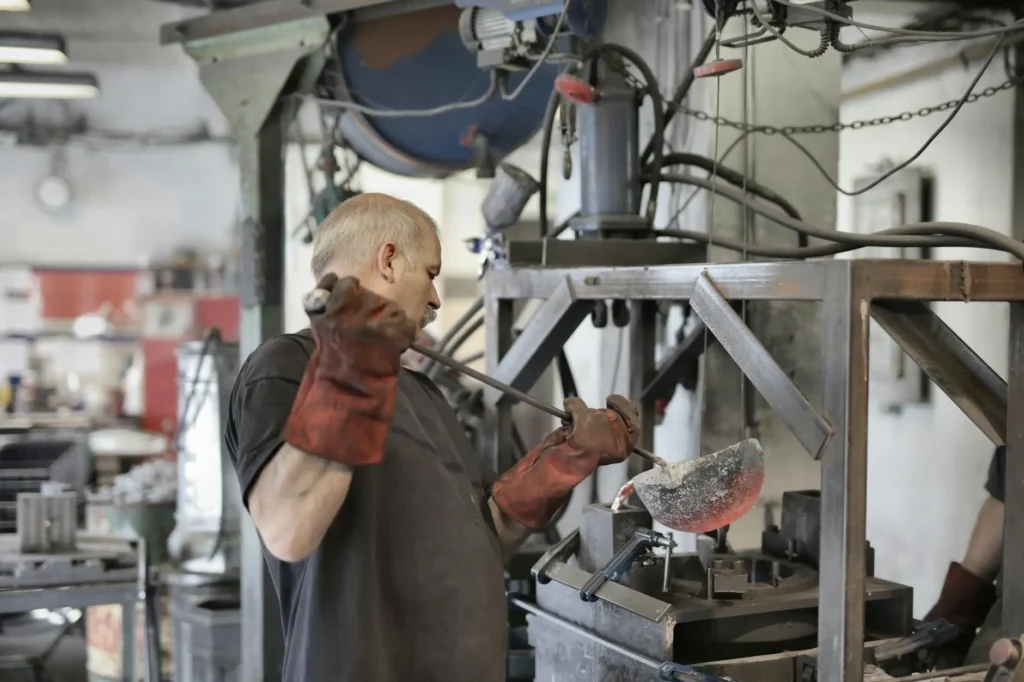While antibiotics are the most common option for treating cystitis and caring for urinary tract health, their use may not be enough to prevent the infection from recurring. In addition, in some cases bacteria may be found in the urine of people without symptoms (asymptomatic bacteriuria). In these situations, antibiotic treatment is not recommended, as it may increase bacterial resistance and make antibiotics ineffective in more serious infections.
Fortunately, in recent years a highly effective complement to conventional treatments has emerged: phytotherapy. This practice has proven its usefulness both as an adjunct to conventional treatment and as part of a healthy diet for urinary tract health.
In this article, we will talk about the American cranberry (Vaccinium macrocarpon Aiton) and the hibiscus or Jamaican rose (Hibiscus sabdariffa L), two plants traditionally used for the care of urinary tract health.
In addition, we will present Uritractin, a food supplement developed by Nutribiolite that combines concentrated extracts of these two plants in a small capsule, providing a convenient and simple alternative to supplementation with cranberry juice or hibiscus infusion. If you want to keep your urinary tract healthy and prevent problems such as cystitis, read on.
The American Cranberry

If you suffer from recurrent cystitis and are considering the consumption of cranberries as a preventive measure against new infections, it is important that you consider the appropriate cranberry species, the recommended amount and the most effective form of administration. The genus Vaccinium, to which the American cranberry belongs, includes the following species:
- Bilberry or bilberry (V. myrtillus L.), in English: bilberry, whortleberry.
- The blueberry (V. corymbosum L.), in English: blueberry or highbush.
- Wild blueberry (V. angustifolium Ait.), in English: wild blueberry or lowbush.
- European cranberry (V. oxycoccus L.), in English: European cranberry or small cranberry.
- The rabbit’s eye cranberry (V. ashei Reade), in English: rabbiteye.
- Cranberry (V. vitis-idaea L.), in English: ligonberry.
- American cranberry (Vaccinium macrocarpon Aiton.), in English: American cranberry or simply cranberry.
The only cranberry species that has been shown to be effective in the prevention of recurrent cystitis is the American cranberry, a fruit of the species Vaccinium macrocarpon Aiton. This fruit is noted for its high amount of antioxidant polyphenols, such as proanthocyanidins (also known by the abbreviation PAC), especially type A, known for their ability to prevent urinary tract infections (UTIs)1.
Proanthocyanidins in American cranberry
Proanthocyanidins are polyphenols of the flavonoid family, formed by structural units called flavan-3-ol. These units bind in two different ways:
The most common form is called type B proanthocyanidin, which consists of the union of two flavan-3-ol units through a single covalent chemical bond. It can be found in many foods. The most popular sources of B-type proanthocyanidins are fruits such as blueberries (Vaccinium myrtillus L.), strawberries, raspberries, blackberries, apples, peaches. They are also found in grape seeds, green tea and chocolate.
The other form is called type A proanthocyanidin, consisting of two flavan-3-ol units joined by two covalent chemical bonds. This type of proanthocyanidins is much less frequent in nature. Only a few foods such as plums, avocados, peanuts or cinnamon contain type A proanthocyanidins, but none of these are as abundant in this substance as American cranberries.
The structural difference between these two types of proanthocyanidins significantly alters their chemical and biological properties. Studies have verified that only type A proanthocyanidins possess antimicrobial capacity 2-4.
The mechanism of action of proanthocyanidins from the American cranberry
Urinary tract infections (UTIs) are quite common, especially in women, due to female anatomy and hormonal problems. In most cases, they are caused by ascending colonization of organisms of enteric origin, mainly Escherichia coli(E. coli), which usually colonize the vaginal opening and periurethral area to ascend to the urinary bladder and eventually to the prostate or kidney, causing asymptomatic bacteriuria, cystitis or pyelonephritis.
Clinical evidence shows that consumption of American cranberries can decrease the recurrence of urinary tract infections caused by E. coli 5, due to the ability of their A-type proanthocyanidins to inhibit the adhesion of these bacteria to the superficial mucous membranes of the urinary tract 6.
The main responsible for the adhesion of E. coli to the mucous membranes of the urinary tract are filamentous appendages called fimbriae or pili, present on the surface of the bacteria. The fimbriae are formed by polymeric filaments composed of protein subunits, where differentiated molecular structures called adhesins are found, which bind to specific receptors located on the epithelial cells of the urinary tract. Proanthocyanidins from cranberry have the ability to bind to the adhesins present in the fimbriae and thus prevent their binding to the epithelial cell receptors.
Cranberries: how and how much to take
The latest Cochrane review of clinical studies, conducted in 20235, could not yet establish the optimal daily dose due to different forms of administration and variability in the amount of proanthocyanidins. However, analysis of clinical studies with capsules or tablets of standardized extracts suggests a minimum daily intake of 36 to 72 mg of proanthocyanidins to prevent urinary tract infections.
The review also noted a high dropout rate by participants who used the juice, due to difficulty complying with their daily intake. Cranberry juice has an intense, acidic taste, which can cause unfavorable symptoms in people with gastrointestinal problems, such as gastroesophageal reflux. In addition, excessive consumption can cause side effects such as abdominal pain and diarrhea. According to the authors, using the juice as a preventive method for urinary tract infections is not recommended due to the difficulty of taking it in a sustained manner over time. As an alternative, the use of tablets and capsules is suggested, which are more recommendable due to their ease of administration and the absence of unwanted symptoms.
It should be noted that since 2004, the French Food Safety Agency (AFSSA) has considered acceptable the claim “Helps reduce the adherence of certain E. coli bacteria to the walls of the urinary tract” on the basis of studies conducted with several cranberry products that provide at least 36 mg of cranberry proanthocyanidins (PAC)7.
The Clinical Practice Guideline for uncomplicated cystitis published in 2017 by the of the Spanish Association of Urology 8, states that:
“Cranberry is an effective preventive option in patients with recurrent urinary tract infections, except in those patients with neurogenic bladder who perform self-catheterization. Although their efficacy is inferior to antibiotic prophylaxis, we believe that they constitute a first-line preventive strategy, since the prophylactic administration of antibiotics, apart from the side effects on the patient (allergies, vaginal candidiasis, etc.), has an impact on the development of resistance to them, since in a given country there is a direct correlation between consumption and percentage of resistance”.
Uritractin: highly concentrated in proanthocyanidins
Nutribiolite’s Uritractin food supplement is a real treasure when it comes to urinary tract care. Each daily dose (1 capsule) provides 250 mg of authentic American cranberry extract(Vaccinium macrocarpon Aiton), standardized to 50% proanthocyanidins. That corresponds to a daily intake of 125 mg of proanthocyanidins from the American cranberry – yes, you read that right, 125 mg!
Most cranberry food supplements are not standardized extracts, so their proanthocyanidin content is not known. This is a fundamental characteristic that a cranberry supplement must have, to guarantee the efficacy of its antibacterial action. In other cases, the extracts present very low standardizations that do not provide the minimum amount of 36 to 72 mg/day of proanthocyanidins recommended by specialists. Uritractin more than guarantees this amount for a powerful and effective supplementation as a preventive strategy against urinary tract infections. But that’s not all! Uritractin also contains hibiscus extract! This ingredient provides bioactive polyphenols for extra protection and complete care of your urinary tract. In the next chapter we will talk about the properties of hibiscus. Read on and learn more about how to take care of your urinary tract with Uritractin.
Hibiscus or Hibiscus flower
Hibiscus is a plant of the Malvaceae family that has hundreds of species. Among them is Hibiscus sabdariffa, known for its hibiscus tea, very popular in Mexico, Egypt and other tropical and subtropical countries. Hibiscus flowers are rich in bioactive polyphenols, especially those derived from flavonoids, anthocyanin sambubiosides and phenolic acids 9. The most studied part of the flower is the calyx, which has been shown to have diuretic and antimicrobial effects, in addition to improving digestion, reducing blood pressure and combating oxidative stress. 10
With respect to the prevention of urinary tract infections, most of the work published to date has focused on demonstrating the antimicrobial activity of hibiscus in laboratory studies against various strains of bacteria that cause urinary tract infections, such as Escherichia coli 11-14, Klebsiella pneumoniae 14, Staphylococcus aureus 12 and Acinetobacterbaumannii.15 In addition, hibiscus extract has been found to be effective in inhibiting the spread of the fungus Candida albicans, obtained from patients with recurrent candidiasis. 16
Cranberries and hibiscus: a powerful combination
The combination of American cranberries and hibiscus offers synergistic properties that make them an excellent choice for urinary tract health. Consuming extracts of these plants is safe and a natural alternative to maintain a healthy urinary tract 8.
Aware of the potential of these two plants, Nutribiolite has developed Uritractin, a food supplement that combines concentrated extracts of American cranberry (standardized to 50% in proanthocyanidins) and hibiscus flowers (standardized to 10% in total polyphenols), in a unique formula for the care of urinary tract health. With Uritractin, you can take advantage of the properties of these two plants in a single capsule that is very small and easy to take, without the inconvenience of daily consumption of an equivalent amount of cranberry juice and hibiscus tea.
Food supplements have the function of supplementing the diet and supporting specific physiological functions, they are not intended to treat diseases. This function is the role of drugs. All Nutribiolite products are not intended to replace medicines and do not dispense with medical advice in situations of illness.
- Sihra, N., et al., Nonantibiotic prevention and management of recurrent urinary tract infection. Nature Reviews Urology, 2018. 15(12): p. 750-776.
- Feliciano, R.P., et al., Ratio of “A-type” to “B-type” Proanthocyanidin Interflavan Bonds Affects Extra-intestinal Pathogenic Escherichia coli Invasion of Gut Epithelial Cells. Journal of Agricultural and Food Chemistry, 2014. 62(18): p. 3919-3925.
- Micali, S., et al., Cranberry and recurrent cystitis: more than marketing? Critical reviews in food science and nutrition, 2014. 54(8): p. 1063-1075.
- Foo, L.Y., et al., The structure of cranberry proanthocyanidins which inhibit adherence of uropathogenic P-fimbriated Escherichia coli in vitro. Phytochemistry, 2000. 54(2): p. 173-81.
- Williams, G., et al., Cranberries for preventing urinary tract infections. Cochrane Database of Systematic Reviews, 2023(4).
- Howell, A.B., Bioactive compounds in cranberries and their role in prevention of urinary tract infections. Molecular Nutrition & Food Research, 2007. 51(6): p. 732-737.
- Général, L.D., AVIS de l’Agence française de sécurité sanitaire des aliments relative à l’évaluation des justificatifs concernant l’allégation ” contribue à diminuer la fixation de certaines bactéries E.coli sur les parois des voies urinaires ” et sur l’emploi de la ” cranberry/canneberge ” ou ” Vaccinium macrocarpon ” dans des jus concentrés, des compléments alimentaires et un cocktail/nectar de jus. AFSSA – Agence française de sécurité sanitaire des aliments, 2004. Afssa – Saisine n° 2003-SA-0352, Saisine liée n°2003-SA-0056.
- Clinical Practice Guideline: uncomplicated cystitis in women; Spanish Society of Urology. 2017.
- Campo-Fernandez, M., et al., Microencapsulation by spray drying from an extract of the calyxes of Hibiscus sabdariffa L. Revista Colombiana de Química, 2021. 50: p. 40-50.
- Riaz, G. and R. Chopra, A review on phytochemistry and therapeutic uses of Hibiscus sabdariffa L. Biomedicine & Pharmacotherapy, 2018. 102: p. 575-586.
- Fullerton, M., et al., Determination of antimicrobial activity of sorrel (Hibiscus sabdariffa) on Escherichia coli O157:H7 isolated from food, veterinary, and clinical samples. J Med Food, 2011. 14(9): p. 950-6.
- Jung, E., Y. Kim, and N. Joo, Physicochemical properties and antimicrobial activity of Roselle (Hibiscus sabdariffa L.). J Sci Food Agric, 2013. 93(15): p. 3769-76.
- Darwish, R.M. and T.A. Aburjai, Effect of ethnomedicinal plants used in folklore medicine in Jordan as antibiotic resistant inhibitors on Escherichia coli. BMC Complement Altern Med, 2010. 10: p. 9.
- Alshami, I. and A.E. Alharbi, Antimicrobial activity of Hibiscus sabdariffa extract against uropathogenic strains isolated from recurrent urinary tract infections. Asian Pacific Journal of Tropical Disease, 2014. 4(4): p. 317-322.
- Abdallah, E.M., Antibacterial activity of Hibiscus sabdariffa L. calyces against hospital isolates of multidrug resistant Acinetobacter baumannii. Journal of Acute Disease, 2016. 5(6): p. 512-516.
- Alshami, I. and A.E. Alharbi, Hibiscus sabdariffa extract inhibits in vitro biofilm formation capacity of Candida albicans isolated from recurrent urinary tract infections. Asian Pacific Journal of Tropical Biomedicine, 2014. 4(2): p. 104-108.
















